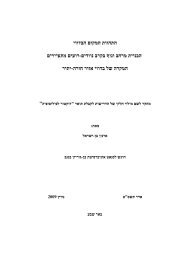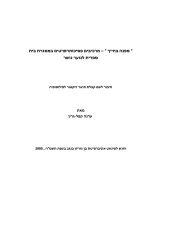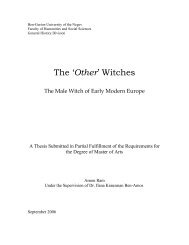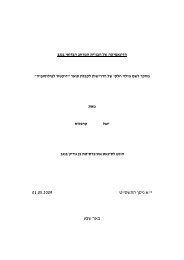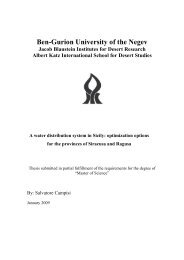CHARACTERIZATION OF DESERT DATE (Balanites aegyptiaca)
CHARACTERIZATION OF DESERT DATE (Balanites aegyptiaca)
CHARACTERIZATION OF DESERT DATE (Balanites aegyptiaca)
You also want an ePaper? Increase the reach of your titles
YUMPU automatically turns print PDFs into web optimized ePapers that Google loves.
identify some saponins from plant extracts (Liu et al., 2003; Liang et al., 2002; Cui et al.,<br />
2000).<br />
<strong>Balanites</strong> <strong>aegyptiaca</strong> is a desert plant species that is primarily grown in most of the arid<br />
regions of the world. Although it is considered to be the most adapted plant species of all<br />
dry arid and semiarid region plants, it is highly neglected. Literature study has revealed that<br />
various parts of this plant contain saponins, and fruit mesocarp contains the highest<br />
quantity. Studies show that most of the ethnobotanical uses of this plant are attributed to its<br />
saponin content. Saponin content in B. <strong>aegyptiaca</strong> has been reported in the literature.<br />
However, to the best of our knowledge, neither the saponin in B. <strong>aegyptiaca</strong> provenance<br />
grown in Israel nor the technique of using liquid chromatography-electrospray ionizationmass<br />
spectrometry (LC-ESI-MS) have been reported. This study describes the separation of<br />
methanol-extracted B. <strong>aegyptiaca</strong> mesocarp saponins by high-performance liquid<br />
chromatography-refractive index (HPLC-RI) to detect the whole spectrum of its major<br />
saponins, followed by electrospray ionization-mass spectrometry (ESI-MS) combined with<br />
multistage mass spectrometry (MS n ) to identify the major steroidal saponins of B.<br />
<strong>aegyptiaca</strong> grown in Israel. The structural determination of selected major saponins was<br />
also carried out using high-field NMR techniques.<br />
Material and Methods<br />
Plant material<br />
Fully ripened fruits of B. <strong>aegyptiaca</strong> were collected from B. <strong>aegyptiaca</strong> plants grown in<br />
Kibbutz Samar located in the Arava rift valley of southern Israel between the Dead Sea and<br />
Red Sea, close to the Jordanian border, 40 km north from the Rea Sea's Gulf of Eilat. The<br />
plant was botanically authenticated by Prof. Uzi Plitman from the herbarium in the Hebrew<br />
University of Jerusalem. Voucher specimen (76816) was deposited in the herbarium of the<br />
Hebrew University of Jerusalem. The epicarp (outer cover) was gently removed by hand<br />
and the mesocarp (pulp) was manually extracted with a knife. The mesocarps were first<br />
freeze-dried with a lyophilizer (Christ Alpha 1-4, Germany), then stored in an electric<br />
desiccator (Sanplatec Corp., Israel) for further use.<br />
17





